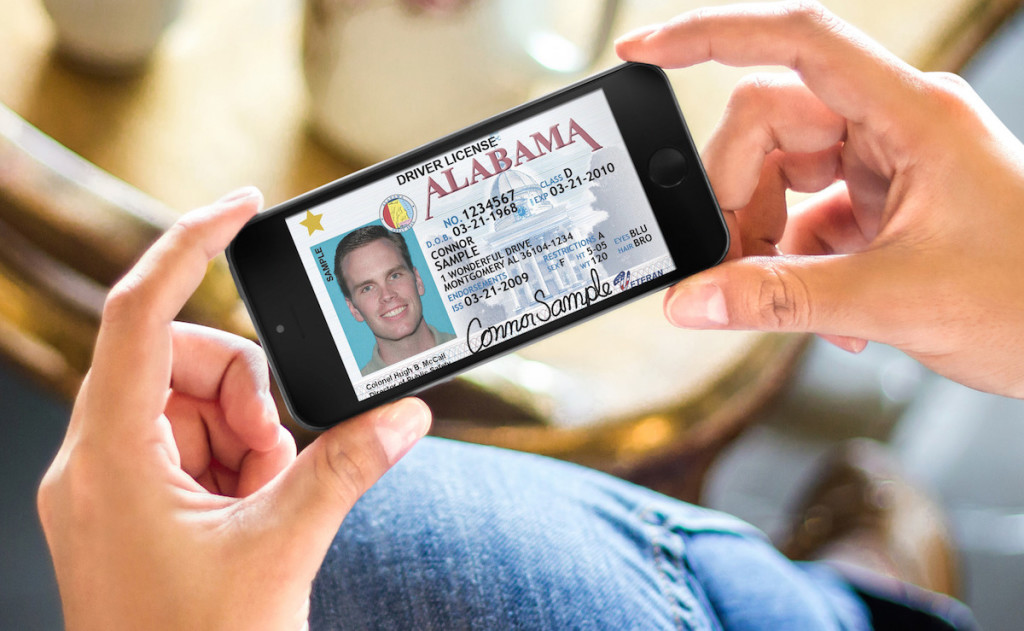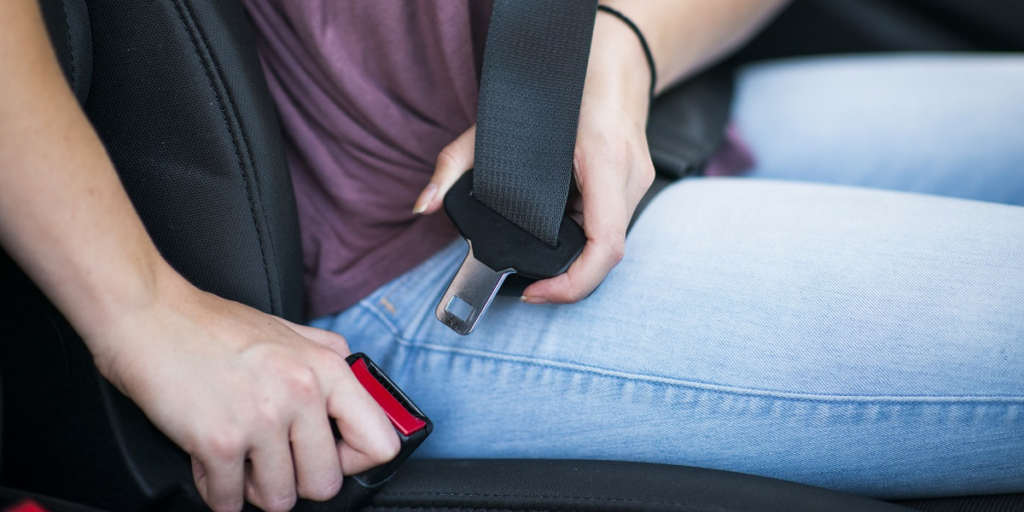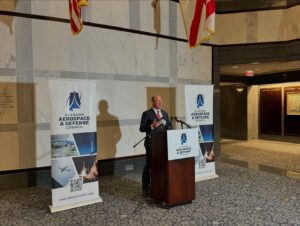Alabama extends online driver license renewal due to COVID-19 pandemic

The State of Alabama is extending online driver license renewals due to the COVID-19 pandemic. Governor Kay Ivey made the announcement Tuesday, allowing Alabama driver license holders to be allowed to renew online a second time during a 12-year period. Until now, driver license holders were limited to one online renewal every eight years. As part of the Alabama Law Enforcement Agency’s (ALEA) commitment to public safety, and in response to the ongoing COVID-19 pandemic, the agency’s Driver License Division has temporarily expanded its online renewal process at www.alea.gov. Customers who renewed their Alabama driver licenses using ALEA’s online system prior to the pandemic may now renew a second time during the next four years. “COVID-19 has presented many challenges in our daily lives. As we work tirelessly to mitigate the spread of the virus in our state and to offer some relief to our citizens, I am proud that ALEA will be enabling more online driver license renewals,” Ivey said. “In Alabama, we want to lift burdens and ensure the health and safety of every Alabamian. This extension is certainly an effort to help do just that.” Since COVID-19 began to affect Alabama citizens, ALEA has, on more than one occasion, modified its Driver License Division operations to ensure the health and safety of both its customers and employees. “We are pleased to offer this extension to ease the minds of customers with health-related concerns during this precarious time, as well as reduce the number of in-person transactions at ALEA’s’s Driver License Examining Offices, county probate, and license commissioners” offices,” added ALEA’s’s Secretary Hal Taylor.
Spencer Collier lists AL.com’s John Archibald passenger day of accident on witness list in Robert Bentley case

Last week, a witness list was released in an ongoing defamation lawsuit filed against former-Gov. Robert Bentley by his former law enforcement chief Spencer Collier. Collier, who is currently the Selma police chief, sued Bentley in 2016. He contends the former Governor wrongfully fired him in March 2016 as secretary of the Alabama Law Enforcement Agency (ALEA) and then tried to discredit him with a sham state investigation. Flash forward to August 2017 and Collier was injured in a two vehicle car crash on Hwy 80 in Montgomery County that led to an investigation, since at the time of the crash Collier was driving an unmarked police SUV issued to him by the city of Selma. Ultimately Collier was cleared of any wrong-doing. After months of coverage on the suit, Alabama Today was tipped off this week to one glaring omission from all of the coverage written thus far: nestled 11 pages deep in a 12 page document, is one key fact: AL.com’s John Archibald was in the with Spencer the day of the wreck. “If any Defendant makes Collier’s wreck of August 14, 2017, an issue, Collier reserves the right to call any witness who has information of Collier’s condition on the day of the wreck including Selma Police Officers, the Selma PD Dispatcher, the Custodian of Records for the Selma PD and al.com columnist John Archibald who rode with Collier on the day of the wreck,” reads the subpoena. According to WSFA-12 the crash report revealed at around 7:45 p.m.: Collier’s vehicle was traveling east on U.S. 80 when it left the roadway, re-entered, then over corrected. Collier’s vehicle then began spinning before crossing the median and striking a second vehicle. The reports indicate Collier told investigators he did not remember anything about the crash or the events leading up to it. The driver of the second vehicle told investigators that when he realized Collier’s vehicle was starting to the cross the median, he hit his brakes and tried to take evasive action to avoid the collision. The report also shows investigators took a blood sample from Collier and submitted it to the Alabama Department of Forensic Sciences. In dozens of articles about the crash — Times Daily, Lagniappe Mobile, Selma Times Journal, WSFA-12, Montgomery Advertiser, Decatur Daily, Alabama News Net — we found no mention of Archibald being in the car with Collier that day. In fact, AL.com, who usually doesn’t miss a beat when it comes to covering everything happening in the state, did not cover the accident whatsoever. Out of 810 articles that mention Collier, there’s not a single one that talks about the car crash where one of their writers, who also happens to now be a Pulitzer Prize winner, was with Collier some time prior to the wreck. Here’s where things get interesting. While the crash is seemingly unrelated to Collier’s firing and subsequent lawsuit, the toxicology report also appears to significant to Bentley in the suit with Collier. In December 2017, the former Governor attempted to subpoena the reports from the Alabama Department of Forensic Sciences (ADFS). In addition to the toxicology results, Bentley also subpoenaed all documents related to the wreck and “any and all communications related to your investigation into Collier’s car accident… including without limitation any internal communications.” Archibald has further clarified in a tweet to Alabama Today that he was not in the car with Collier at the time of the accident, but rather with him earlier in the day. “Are you saying I was a passenger in Collier’s wreck? I was not. We filmed him in his cop car earlier in the day,” tweeted Archibald. Are you saying I was a passenger in Collier’s wreck? I was not. We filmed him in his cop car earlier in the day. — John Archibald (@JohnArchibald) January 30, 2019 See the full subpoena below: *Headline and article have been updated to reflect John Archibald were not in the wreck together. Rather Archibald was a passenger in Collier’s car that day.
Activists focusing on Alabama officials after mall shooting

Demonstrations that have targeted an Alabama city where police shot and killed a black man on Thanksgiving will be redirected toward state officials now investigating the shooting, organizers said Wednesday. Leaders speaking at a news conference said demonstrations targeting the Birmingham suburb of Hoover would now focus on state officials who are investigating the shooting death of Emantic “EJ” Bradford Jr. They promised protests at the homes and offices of Alabama Attorney General Steve Marshall and the head of the Alabama Law Enforcement Agency. A spokesman for Marshall, Alabama’s top law enforcement official, declined comment. The change follows a meeting in which protest spokesman Iva Williams said officials in the city of Hoover agreed to consider several requests made by demonstrators, including the addition of a citizens review board and a diversity officer. Protest leader Carlos Chaverst Jr. said demonstrations were being halted temporarily in the city “in expectation the city of Hoover will do the things they told us they would do” City officials did not immediately respond to an email seeking comment. An officer fatally shot Bradford after hearing gunfire at Hoover’s Riverchase Galleria mall. Bradford had a gun and the officer shot after seeing it, but Bradford wasn’t responsible for a shooting that wounded two people, authorities said. Republished with permission from the Associated Press.
Alabama gets federal assistance to help take drug dealers, drugs off the streets

In the state’s ongoing fight against the drug epidemic, Gov. Kay Ivey has put federal funds in the hands of law enforcement in hopes of reducing illegal drug use in the state by arresting those who buy or sell illegal drugs or falsely obtain prescription drugs. On Thursday, the Alabama Department of Economic and Community Affairs (ADECA) announces Ivey awarded nearly $1.6 million to the Alabama Law Enforcement Agency (ALEA) and the seven regional drug task force offices under ALEA. The task forces were formed in January 2018 and are made up of officers in local law enforcement agencies. “We must combat illegal and illegally obtained drugs that rob so many people of productive lives and destroy families,” Ivey said. “I am pleased to support this task force, and I am grateful to the men and woman who risk their lives to take drugs off our streets.” In less than a year since its inception, the statewide drug task force has been involved in 889 drug cases and has seized 463 pounds of marijuana, 179 pounds of cocaine and 29.3 pounds of heroin and opioids along with other drugs and 312 firearms. The task force is made up of 93 law enforcement officers representing 46 state, county and municipal law enforcement agencies. ALEA and the seven regional drug task force offices each received $197,500 in grant funding. Each regional office covers eight to 12 counties, although officers have powers in other jurisdictions. Funds will be used to cover overtime and operational expenses and equipment purchases. The ADECA is administering the grants from funds made available to the state from the U.S. Department of Justice (DOJ). “ADECA is proud to be a partner with Gov. Ivey and ALEA in this process that takes drugs and dealers off out streets and makes our communities safer,” ADECA Director Kenneth Boswell said.
Authorities arrest suspect in Thanksgiving shooting at Hoover mall where police killed man they thought was shooter

The Latest on a Thanksgiving night shooting at a mall in Alabama (all times local): 11:30 p.m. Authorities say they have arrested a suspect in a Thanksgiving night shooting at an Alabama shopping mall where police killed a man they thought was the shooter. The Alabama Law Enforcement Agency says 20-year-old Erron Martez Dequan Brown of Bessemer was charged with attempted murder in the Nov. 22 shooting at the Riverchase Galleria in Hoover. Inspector Frank Lempka with the U.S. Marshals in Atlanta said Brown was arrested Thursday morning at a relative’s home in South Fulton, just outside of Atlanta. Lempka said Brown was taken to the Fulton County jail for an extradition hearing to be sent back to Alabama. Emantic “EJ” Bradford Jr. was killed by an officer responding to the report of a mall shooting. Police said Bradford had a gun, and they initially blamed him for opening fire. They later retracted that allegation. ___ 10 a.m. Leaders of an Alabama city that’s been the target of protests since police shot and killed a black man in a shopping mall are asking the state for permission to release more information about the killing. Hoover city officials made the request during an appearance Thursday. They say they’ll look at releasing information on their own if no response comes by noon Monday. Demonstrators and relatives of Emantic “EJ” Bradford Jr. have pushed authorities to release video and other evidence. Bradford was killed by an officer responding to a report of a mall shooting on Thanksgiving. The state is investigating and so far has refused to release video and other information about the killing. A spokesman for the Alabama Law Enforcement Agency didn’t immediately respond to an email seeking comment. Republished with permission from the Associated Press.
SPLC sues ALEA for suspending Alabama licenses for unpaid traffic tickets

The Southern Poverty Law Center (SPLC) is challenging Alabama’s practice of suspending drivers licenses of individuals who fail to pay traffic tickets, arguing it violates the Fourteenth Amendment by “punishing persons simply because they are poor.” The SPLC filed a lawsuit against the Alabama Law Enforcement Agency (ALEA) last Monday in which it claims roughly 23,000 Alabamians are without a valid divers license because they’ve been unable to pay traffic tickets. “A suspended driver’s license has disastrous implications for individuals living in poverty,” said Micah West, SPLC senior staff attorney. “The U.S. Constitution prohibits the state from suspending a person’s driver’s license without first determining their ability to pay. Through this lawsuit, we hope to end this illegal practice in Alabama.” The lawsuit describes how, under an existing rule of criminal procedure, Alabama courts routinely suspend driver’s licenses for nonpayment of traffic tickets without prior notice, an inquiry into an individual’s ability to pay, or an express finding that nonpayment was willful, as required by the Due Process and Equal Protection Clauses to the U.S. Constitution. The ALEA carries out these suspensions and does not reinstate driver’s licenses until the individual has paid all outstanding fines and costs to the court. The SPLC filed the suit on behalf of three Alabama residents who had their licenses suspended. They seek a preliminary injunction to halt the practice while the case is before the court. Earlier this year, SPLC filed a lawsuit challenging similar practices in North Carolina and reached an agreement with the Mississippi last year that will result in the state lifting failure to pay suspensions for over 100,000 people. Lawsuits have also been filed challenging the suspension of driver’s licenses for nonpayment in Tennessee, Michigan, California and Virginia.
With the Census on the horizon, Alabama’s growing population already impacting driver’s license numbers

Sure the 2020 Census may still be more than a year away, but Alabama’s growing population is already making an impact when it comes to state issued driver’s licenses. On Tuesday, the Alabama Law Enforcement Agency (ALEA) said it’s adding an eighth digit to all new driver licenses issued by the state starting Dec. 1 to account for the state’s growing population. According to the AP, “Census statistics show the state’s estimated population at 4.9 million people in 2017. That’s an increase of about 2 percent since 2010.” But driver’s license numbers aren’t the only thing 2020 U.S. Census could impact. Depending on participation levels and what the results indicate, Alabama risks losing a seat in the U.S. House of Representative as well as a vote in the Electoral College, and also federal funds. Alabama’s Census lawsuit Back in May, Alabama 5th District U.S. Rep. Mo Brooks and Alabama Attorney General Steve Marshall filed a lawsuit against the federal government over what they said was the Census Bureau‘s “unlawful” decision to include of illegal immigrants in census data “used to determine the apportionment of the U.S. House of Representatives and the Electoral College.” “If the U.S. Census Bureau follows through with its plan to include illegal aliens in the 2020 census for purposes of apportionment, Alabama will lose both a seat in the U.S. House of Representative and a vote in the Electoral College,” explained Marshall. “Alabama’s loss will be another state’s gain, as states with a growing illegal alien population will be the beneficiary of this reapportionment. I have joined with Congressman Mo Brooks in filing suit against the federal government to stop the inclusion of illegal aliens in the census’s apportionment population. The Constitution does not permit the dilution of our legal residents’ right to equal representation in this manner.” The U.S. Census Bureau has until Tuesday, Nov. 13 to respond to the state’s lawsuit seeking to exclude immigrants living in the country illegally from U.S. Census counts.
Walt Maddox announces public safety plan

On Thursday, Democratic gubernatorial candidate and Tuscaloosa Mayor Walt Maddox announced his plan to improve public safety throughout Alabama. Since 2010 roadway fatalities in our the Yellowhammer State have risen a whopping 155%, while at the same time Alabama has dropped State Trooper staffing to a third of its recommended level. According to the State Troopers Association, fewer than 300 Troopers patrol the entire state, a number that should be closer to 750 according to the Alabama Law Enforcement Agency (ALEA), and should be more than 1000 according to the Center for Advanced Public Safety at the University of Alabama. According to Maddox, this means: Big trucks speed through Alabama with impunity Drunk drivers go undetected Drug and human traffickers face little risk of arrest Overweight vehicles tear up our roads Those in need of emergency assistance have much longer wait times because at current staffing many Troopers have to cover multiple counties. Maddox has a plan to remedy that problem and hopes to improve those facts. “In the City of Tuscaloosa, where I’ve been mayor since 2005, we’ve had tremendous success in promoting and improving public safety. Over the past 10 years, my administration has overseen a 45 percent decrease in burglaries, 42 percent decrease in auto thefts, 35 percent decrease in murders, and 18 percent decrease in robberies,” said Maddox. “Tuscaloosa Police Department is one of the best trained and equipped law enforcement agencies in Alabama.” Read his full plan here.
Eric Mackey sends memo to school superintendents outlining new safety program

As schools across the state begin opening for the fall and in the wake of school shootings across the county one issue on nearly every parents mind is school safety. On Friday, State Superintendent of Education Eric Mackey sent a memo to city and county Superintendents across the state outlining the suggested implementation of Governor Kay Ivey‘s Alabama Sentry Program. In May Ivey announced her new plan to provide additional security measure in schools that do not have a School Resource Officer (SRO). The voluntary program will permit administrators in schools, without an SRO, to maintain a firearm on campus in a secured safe in order to be prepared to respond to an active shooter situation. The Sentry Program will require that the administrator successfully complete training created and certified by the Alabama Law Enforcement Agency (ALEA). Unlike teachers, school administrators have complete access to their schools and are responsible for the safety of all students at the school, not an individual classroom. In his memo, Mackey emphasized that the program is completely voluntary on the part of the school administrator, and that no school board may require their participation. He also outlined eleven steps as the suggested process for school administrators if they choose to take part in the program, including: The local board of education, in consultation with the superintendent, must decide whether to participate in the Alabama Sentry Program. The decision to participate is considered an amendment to the school safety plan in accordance with Section 16-1-44 (C)(2), Code of Alabama, 1975, which is not subject to certain provisions of the Alabama Open Records Act, Section 36-12-40, Code of Alabama, 1975. The local board of education should consult with its own legal counsel regarding any policy amendments, changes to the safety plan, as well as any open records and/or open meetings requirements. The local board of education, through its superintendent and/or legal counsel, should initiate an agreement with the local sheriff if it wishes to implement the ASP whereby the authorized school administrator is appointed as a reserve deputy sheriff. The local sheriff will vet each approved candidate to ensure all requisite qualifications are met such as mental and physical fitness for duty as detailed below. The ASP is, at its most essential level, an agreement between the local board of education and the local sheriff. Both of these entities should consult their own legal counsel regarding the type, extent, parameters, and term of any proposed agreement. A sentry candidate must be a school administrator who is properly certified by the local sheriff and works in a participating school system where the local board of education has voted to implement the program. Such a candidate who wishes to become a sentry should send a letter to the superintendent establishing his or her desire to participate. The Alabama State Department of Education (ALSDE)issued certificates, which are considered “school administrator’ certificates for the purpose of this program are: Instructional Leader, Educational Administrator Principal and Career and Technical Administrator. The superintendent may decide whether to forward the letter to the local sheriff for full evaluation and provisional approval. If the letter is forwarded to the local sheriff, it is the responsibility of the sheriff, subject to the agreement previously made between the sheriff and the board, to determine fitness of the sentry candidate. The sheriff will be responsible for completing each of the following for each sentry candidate at a minimum: Physical fitness for duty evaluation, Psychological fitness for duty assessment, using validated instruments and in-depth personal history evaluations Drug and alcohol screening, Background check and Valid pistol permit verification. After the local sheriff validates fitness of the candidate, he or she will refer the candidate to ALEA. ALEA will notify the candidate of training opportunities and requirements. ALEA will copy the local sheriff and the local superintendent on its communications with the candidate. After ALEA has certified that the candidate has completed the required training to serve as a sentry,ALEA will certify such to the local sheriff. The local sheriff may then deputize the sentry candidate who may then be authorized as a reserve deputy sheriff as provided by law. See Ala. Code $16-1-44.1 (1975). The local sheriff will notify the local superintendent of this action. The procurement of any authorized equipment such as a firearm, ballistic vest or biometric safe is the sole responsibility of the local board of education. Read Mackey’s full memo below:
Kay Ivey announces plan to arm school administrators

In the wake of school shootings across the county, Gov. Kay Ivey is taking precautionary action. On Wednesday she announced a new plan that provides for an additional security measure in schools that do not have a School Resource Officer (SRO). Dubbed the Alabama Sentry Program, the voluntary program will permit administrators in schools, without an SRO, to maintain a firearm on campus in a secured safe in order to be prepared to respond to an active shooter situation. The Sentry Program will require that the administrator successfully complete training created and certified by the Alabama Law Enforcement Agency (ALEA). Unlike teachers, school administrators have complete access to their schools and are responsible for the safety of all students at the school, not an individual classroom. “The Governor’s SAFE Council recommended adding more School Resource Officers throughout our state, a solution that I support, and will work with the legislature to implement. However, until we have a concrete plan to increase the number of SROs, we must provide a way for schools to protect their students in the upcoming school year. I have created the Alabama Sentry Program to provide additional security measures for our children, and to utilize the current summer break to train those who volunteer to be a sentry,” Ivey explained. “The Alabama Sentry plan is a reasonable and measured approach to provide an additional tool for schools without a resource officer. With the unfortunate continued occurrence of school violence across our country, we cannot afford to wait until the next legislative session.” The Sentry Program will be established immediately, through administrative action, under existing law, as a bill to arm school teachers failed this legislative session. Joining Ivey for the announcement were Alabama Secretary of Law Enforcement Hal Taylor and Alabama’s new Superintendent of Education, Dr. Eric Mackey. “I believe this is a common-sense approach to increasing security in our schools. The SAFE Council worked hard with officials from around the state to create a list of recommendations. I applaud Governor Ivey and members of the SAFE Council for creating this program,” Taylor said. “School security is one of the highest priorities for law enforcement and this program will help first responders identify and stop threats quicker and before they happen.” A school administrator must seek the approval of their local superintendent, local school board, and county sheriff to participate in the Sentry Program. School administrators seeking to assume the duties of school sentry: must possess a valid Alabama school administrator certificate and a valid concealed-carry pistol permit; must be appointed as a reserve sheriff’s deputy; must be an active school administrator in a public elementary or secondary school without an SRO; and must pass a drug screening, a mental-health assessment, and a stress test. Sentries will be subject to random drug screenings, annual training, mental-health, and stress test recertification. “Schools are sanctuaries of learning and, as such, they must be safe places for our children to learn, knowing that the adults around them are watching out for their safety and security. With recent events around our country, now is the time to act,” Dr. Mackey added. “The Alabama Sentry Program is one way for us to put more safety resources in schools without having to seek new funding. This is truly a step in the right direction. I look forward to working with Secretary Taylor and the entire SAFE Council to implement this program.” A school sentry’s duties will be written to include “the use of lethal force to defend the students, faculty, staff, and visitors of his or her school from the threat of imminent bodily harm or death by an armed intruder.” School sentries shall only exercise their duties in response to an armed intruder. School sentries will be required to keep their firearms in a secured weapon storage system. School sentries, or their employing board of education, shall be responsible for acquiring and maintaining a weapons-storage system, an approved weapon, ammunition, and a specially-designed bullet-proof vest. The program is slated to be in place to start the 2018-2019 school year.
State crash data shows seat belt use critical in saving lives

By: Adam Jones | Communications Specialist Senior/Research at the University of Alabama Those involved in auto crashes while not wearing seat belts are 40 times more likely to die than those who buckle up, according to an analysis of state crash records from the past five years. For the study, University of Alabama researchers at the Center for Advanced Public Safety examined crash records from 2013 through 2017 provided by the Alabama Law Enforcement Agency, or ALEA. Crash records showed about one out of every 25 unrestrained motorists involved in a crash will suffer a fatal injury, but only about one out of every 1,000 restrained motorists involved in a crash will have a fatal injury. This means that people are 40 times more likely to be killed without restraints. One reason for this is those ejected from vehicles during crashes have 50 times the death rate as those who remain in the vehicles, and the probability of being thrown from vehicles increases about 337 times for those not restrained. “There is no doubt that seat belts are the most effective way of reducing the chances of getting killed in a crash,” said Dr. David Brown, a research associate at CAPS who led the study. “The chances of avoiding a crash altogether that involves injury over your driving lifetime is very low, so these are not just hypothetical or extreme examples. They are real life-and-death probabilities.” Along with an increased chance of dying in a crash if unrestrained, there is an increased chance of serious injury. About one in seven unrestrained motorists involved in a crash will sustain a serious injury, while only about one in 50 properly restrained motorists will have a serious injury. The chances of serious injury for those unrestrained increase by more than a factor of seven. For those who buckle up, nine out of 10 are not injured during a crash. Some of the other interesting factors include driver and passenger demographics and other correlations: Those between the ages 17 and 36 are unrestrained significantly more than average. Males are about twice as likely to be unrestrained as females. If all back-seat occupants were properly restrained, it would result in an estimated saving of 62 lives per year in Alabama. Unrestrained drivers are about 2.5 times more likely to have their crashes in the rural areas than in the cities. Brown said there are many things drivers should do to prevent severe traffic crashes in addition to the use of seatbelts. They include, in the order of ability to prevent fatal crashes: Slowing down, as the probability of fatality doubles for every 10 mph increase. Pulling over to a safe stopping point until distractions, such as cell phones, are resolved. Never driving or riding with anyone who has had any alcohol or who has taken any mind-altering drugs, even if prescribed. Anticipating and avoiding bad weather, especially when coupled with darkness. Watching for deer if traveling just after dark and slowing down. Driving defensively to reduce risk by putting distance between others vehicles, staying out of the blind spots of large trucks and letting aggressive drivers pass. This article as first published on the University of Alabama website.
You bought it, they lost/stole it; $745k in state property unaccounted for in 2017

Alabama’s government is not keeping good track of the various items state agencies have purchased using hard-earned taxpayer dollars. According to Alabama’s 2017 Annual Loss Report state agencies were unable to account for a whopping $745,759.50 last year. Compiled by State Auditor Jim Zeigler — whose office is tasked with providing accountability to the taxpayers of Alabama by maintaining accurate records of all personal property valued at $500 and above by conducting property and equipment audits for agencies statewide — the report reveals 282 items were lost in 2017 alone. That said, all property shown as lost on the report may not be due to neglect. According to the auditor’s office, property reported lost includes property lost, property destroyed by natural causes (such as fire) and property stolen that has been reported to the local law enforcement authorities. Legally, it is not the responsibility of the auditor to locate lost property and equipment of state agencies, but to report it to the proper authorities including the Governor, Attorney General, Legislature, Agency Directors and to provide the information to members of the media and the general public. Biggest losers Topping the list of agencies that lost the most last year was overwhelmingly the Alabama Law Enforcement Association (ALEA), which lost a total of $148,864.66 including two fingerprint capture stations that cost taxpayers $21,600 a piece. Alabama’s Department of Conservation is certainly not conserving funds. The department lost 15 items years totaling $75,565.55. The reason for the inflated number? Two vehicles were totaled, which cost the agency $49,387.11. The Department of Conservation-Parks was right behind it’s parent agency with even more items lost — 47, worth $56,251.26. Among their lost items was $4,768 worth of clothes that were destroyed when a park employee “accidentally disposed” of an inoperable washing machine and dryer. They also lost another $9,835.94 worth of computers. The auditor’s office believes these agencies, and others where they found losses, are not being good stewards of taxpayer dollars. “State Agencies are not being good stewards of taxpayer dollars,” Zeigler told Alabama Today “While overall losses of state property of one percent are below the national average of about 1.5 percent, the list of losses of each agency appears to include avoidable losses. Some of the things lost would almost sound funny if this were not our tax dollars — a golf car, a truck, 140 tasers. Best stewards of taxpayer dollars Of the agencies which lost items in 2017, overwhelmingly the Examiners of Public Accounts lost the least. They lost a 500GB hard drive worth $53.96. The Office of Voter Registration was unable to locate an IBM monitor during the audit, which cost the agency $229.40. Beyond all control As the auditor’s office pointed out, some losses were beyond the control of the given agencies. For example the ABC Board lost 13 items totaling $17,252.70 due to a tornado. While other agencies lost some items due to fires. Holding agencies accountable According to Zeigler, all his office can do is report the loss. “Once my auditors complete an audit that shows losses, I lose jurisdiction. I am required to turn the audit report over to the Alabama Attorney General,” Zeigler explained. “The enforcement of the audit cannot be done by the auditor’s office but must depend on the AG. I am sad to report that during the two years I served with former Attorney General Luther Strange, not one piece of missing property was ever recompsensed by the AG. Not one person was ever held accountable.” Solutions for the future Zeigler is working on a bill that will transfer authority to enforce state audits from the AG to the State Auditor, to avoid similar situations in the future. He says that’s how it is done in Mississippi where their state auditor is legally allowed to take legal action to enforce his own audits. Zeigler says his office is now installing a high-tech audit system called Radio Frequency Identification (RFID) which will allow for an easier auditing process in the future. “It will allow my auditors to do the audits more quickly and more often It will also allow them to actually find the missing item using a chip embedded in each item,” said Zeigler. “It will take us another year and a half to have RFID operative. Our goal is to lower losses to as close to absolute zero as humanly possible. 2017 agency loss overview Agency Quantity Acquisition Cost Depreciated Value Alabama Law Enforcement Agency 21 $148,864.66 $22,766.64 Department of Conservation 15 $75,565.55 $34,800.99 Department of Conservation-Parks 47 $56,251.26 $7,998.41 Department of Transportation-State General 23 $53,445.30 $24,707.93 Insurance Department 3 $47,564.00 $22,378.00 Office of Prosecution Services 4 $43,902.00 $4,521.90 Department of Education 26 $33,913.79 $4,904.08 State Board for General Contractor 1 $30,837.20 $24,669.76 Historical Commission 3 $27,992.00 $2,851.70 Board of Pardons and Paroles 31 $23,927.74 $2,893.83 Alabama Forestry Commission 6 $23,717.03 $19,966.30 Department of Corrections 5 $23,339.09 $2,578.72 Alabama Onsite Wastewater Board 1 $23,055.00 $18,444.00 Department of Transportation-State Truck 1 $22,618.00 $13,570.80 HAVA/New oter Registration 12 $17,871.22 $1,787.12 ABC Board 13 $17,252.70 $10,142.99 Alabama Historic Ironworks Commission 15 $14,763.65 $1,476.37 Alabama Space & Rocket Center 9 $11,444.13 $2,046.91 Department of Transportation-Highway Dept 14 $11,129.45 $5,180.69 Finance Telecommunications Inventory 5 $5,846.73 $1,230.40 School of Fine Arts 3 $5,277.00 $906.70 Department of Revenue 4 $4,345.24 $3,431.32 Alabama State Port Authority 3 $4,312.39 $924.57 Department of Forensic Sciences 3 $3,856.50 $594.40 Agriculture & Industries 2 $3,489.62 $2,583.52 Youth Services 2 $2,810.60 $427.56 Alabama Dept. of Environmental Management 1 $1,914.79 $1,340.35 Banking Department 1 $1,758.00 $1,054.80 Department of Human Resources 2 $1,604.00 $1,144.10 Alabama Tourism Department 2 $1,559.95 $950.69 Board of Medical Examiners 1 $787.55 $630.04 Medicaid Agency 1 $460.00 $0.10 Office of Voter Registration 1 $229.40 $22.94 Examiners of Public Accounts 1 $53.96 $37.77 TOTALS 282 $745,759.50 $242,966.40


